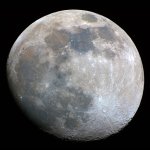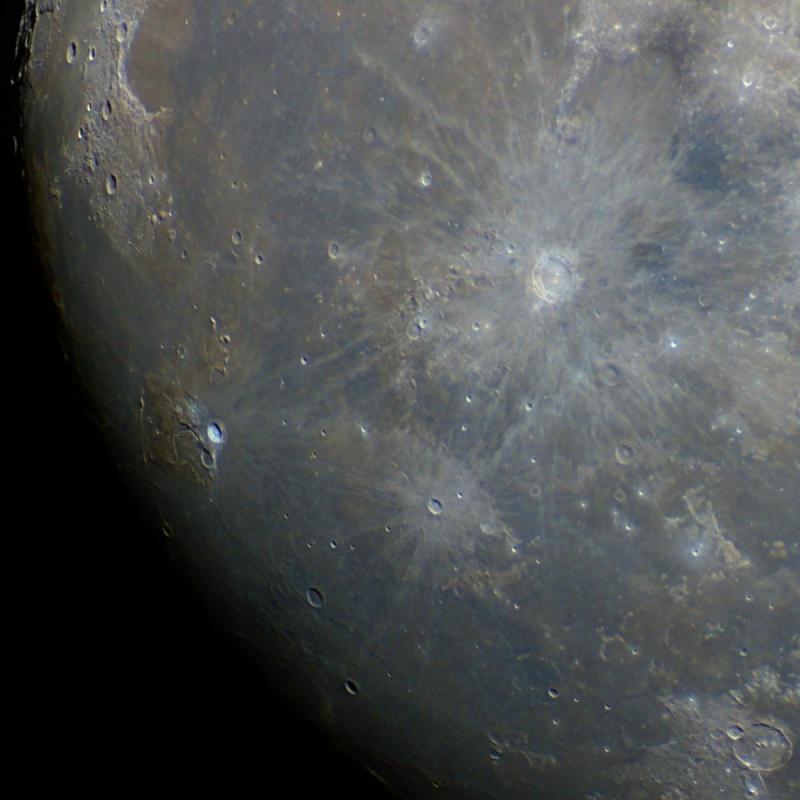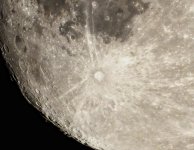A barlow is a negative lens placed between the telescope objective and the eyepiece and effectively increases the focal length of the objective to provide a magnification increase, usually around 2x. It is often asserted that a barlow will increase the eye relief, but this is not true. For the same magnification though, one could use an eyepiece with a longer focal length and this would usually have more eye relief.
In a recent discussion on Cloudy Nights on orthoscopic and Plössl eyepieces one member suggested that the manufacturing and assembly of such tiny elements in the short focal lengths required such precision that it might be better to use a barlow with a longer focal length. This seemed plausible and according to Rutten and van Venrooij in "Telescope Optics" a barlow can also reduce field curvature and astigmatism.
I still have a few astronomical eyepieces, though I don't own an astronomical telescope. I tried out a Televue 60 a few years ago but it didn't really offer any improvement on my Swarovski ATM 65HD and I retained the 3,5 mm Nagler I used in this comparison. It was useful for resolution measurements on the ATM 65 and Kowa 883 but exit pupils of 0,5-0,6 mm are problematic for me now with floaters. The idea was that a barlow in combination with my TV 11 mm Plössl would offer more magnification than the 60x of the Kowa zoom with a still acceptable exit pupil around 1 mm. I ordered a Baader Q-Turret 2,25x barlow, which was reasonably priced.
Well, it didn't work! It didn't work either with a 28 mm Edmund RKE, although this would almost have had the same magnification as the 11 mm on its own. I was unable to achieve focus at about 70 m.
It didn't work either with a 28 mm Edmund RKE, although this would almost have had the same magnification as the 11 mm on its own. I was unable to achieve focus at about 70 m.
However, one can unscrew the barlow lens fom its housing and insert it directly into the eyepiece for 1,3x and, surprisingly this worked with reserves of infinity focus with a 7,5 mm Baader Eudiascopic for a nominal 87x although the Eudiascopic will not reach infinity focus in the Kowa on its own.
It gave me good views of the Tapezium in the Orion nebula although I could discern the A, B, C and D stars at much lower magnifications in the Kowa, and very nearly in the ATM 65 at 30x.
Incidentaly, I don't really understand the preferences of some amateur astonomers for such small increments in magnification and also that many reject large exit pupils in suburban skies and prefer to "darken" the background sky with moderate exit pupils. In suburban skies at half moon I had a superb view of the Pleiades in the Kowa with the 28 mm RKE at 18x and 5 mm exit pupil.
John
In a recent discussion on Cloudy Nights on orthoscopic and Plössl eyepieces one member suggested that the manufacturing and assembly of such tiny elements in the short focal lengths required such precision that it might be better to use a barlow with a longer focal length. This seemed plausible and according to Rutten and van Venrooij in "Telescope Optics" a barlow can also reduce field curvature and astigmatism.
I still have a few astronomical eyepieces, though I don't own an astronomical telescope. I tried out a Televue 60 a few years ago but it didn't really offer any improvement on my Swarovski ATM 65HD and I retained the 3,5 mm Nagler I used in this comparison. It was useful for resolution measurements on the ATM 65 and Kowa 883 but exit pupils of 0,5-0,6 mm are problematic for me now with floaters. The idea was that a barlow in combination with my TV 11 mm Plössl would offer more magnification than the 60x of the Kowa zoom with a still acceptable exit pupil around 1 mm. I ordered a Baader Q-Turret 2,25x barlow, which was reasonably priced.
Well, it didn't work!
However, one can unscrew the barlow lens fom its housing and insert it directly into the eyepiece for 1,3x and, surprisingly this worked with reserves of infinity focus with a 7,5 mm Baader Eudiascopic for a nominal 87x although the Eudiascopic will not reach infinity focus in the Kowa on its own.
It gave me good views of the Tapezium in the Orion nebula although I could discern the A, B, C and D stars at much lower magnifications in the Kowa, and very nearly in the ATM 65 at 30x.
Incidentaly, I don't really understand the preferences of some amateur astonomers for such small increments in magnification and also that many reject large exit pupils in suburban skies and prefer to "darken" the background sky with moderate exit pupils. In suburban skies at half moon I had a superb view of the Pleiades in the Kowa with the 28 mm RKE at 18x and 5 mm exit pupil.
John









